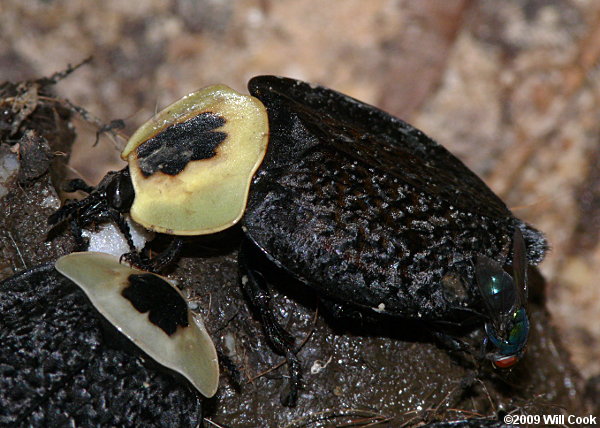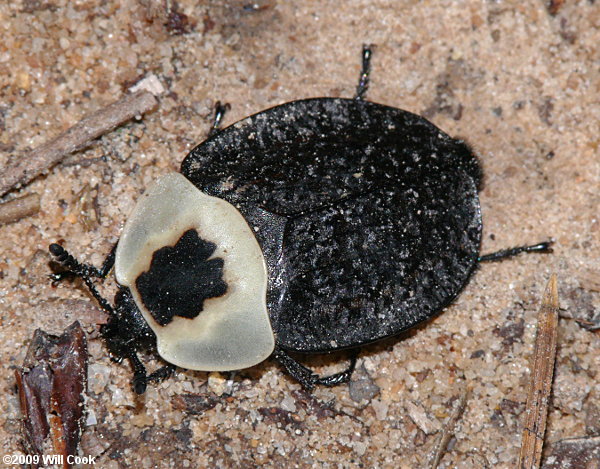
Nutrition
Similar to
the rest of the beetles that make up the family Silphidae, more
commonly known as carrion beetles, the
Necrophila americana
primarily eats decaying organic matter such as dead animals. In
order to be a successful family this group of beetles needs to be
very effective at finding its food source. The secret to this lies
in the antennae. The antennae contain olfactory receptors which are
critical in the process of searching for a decaying food source
(Dethier, 1947).
On average it takes the
Necrophila americana between three and five days after the death
of the food source to locate it
(Shubeck
and Blank, 1982).
B
The Necrophila americana
use dead animals as a host for their larva, which allows the larva
an immediate food source once hatched. Also, the adult American
carrion beetles not only
eat already dead organic matter but also the larva of flies that
have beaten the beetle to the dead food source. American carrion
beetles do this in order to stop the fly larva from eating the food
source that the beetle’s larva will eventually be feeding on once
they have hatched from their eggs. This ensures that the beetle’s
larva will have enough to eat once hatched (O'Toole, 2002).
Below: The picture displayed below shows the American carrion beetle feeding on dead organic matter along with several flies that compete for a food source.


.jpg)